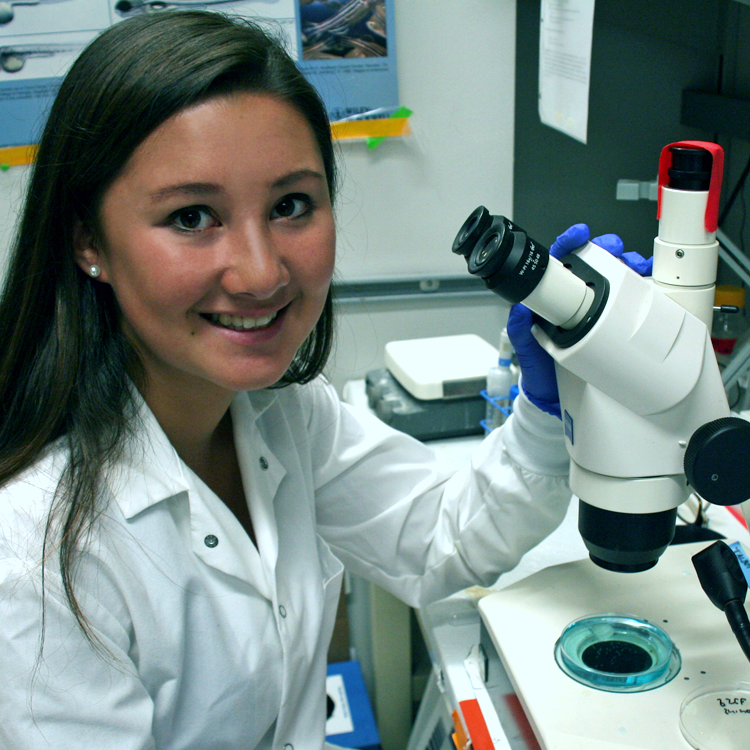
Home Department: Human Biology
Supported by: Bio-X
Mentor: William Talbot, Developmental Biology
 Oligodendrocytes and Schwann cells are supportive cells that produce the myelin sheath around axons in the nervous system. Cyclic adenosine monophosphate (cAMP) is a messenger that regulates differentiation of these cells, which affects proper development of axons. Using zebrafish as a model organism, Hannah will investigate the function of cAMP by using fluorescent tagging and observing myelin sheath development around the axon and gene expression at various stages of development. A better understanding of the disruption of myelin has important implications for diseases such as multiple sclerosis (MS) and peripheral neuropathy.
Oligodendrocytes and Schwann cells are supportive cells that produce the myelin sheath around axons in the nervous system. Cyclic adenosine monophosphate (cAMP) is a messenger that regulates differentiation of these cells, which affects proper development of axons. Using zebrafish as a model organism, Hannah will investigate the function of cAMP by using fluorescent tagging and observing myelin sheath development around the axon and gene expression at various stages of development. A better understanding of the disruption of myelin has important implications for diseases such as multiple sclerosis (MS) and peripheral neuropathy.
Poster presented at the Stanford Bio-X Interdisciplinary Initiatives Symposium on August 24, 2017:
Investigating the Role of Gpr126 and cAMP in Schwann Cells
Hannah Llorin1, Mariapaola Sidoli1, William Talbot1
[Department of Developmental Biology1, Stanford University]

